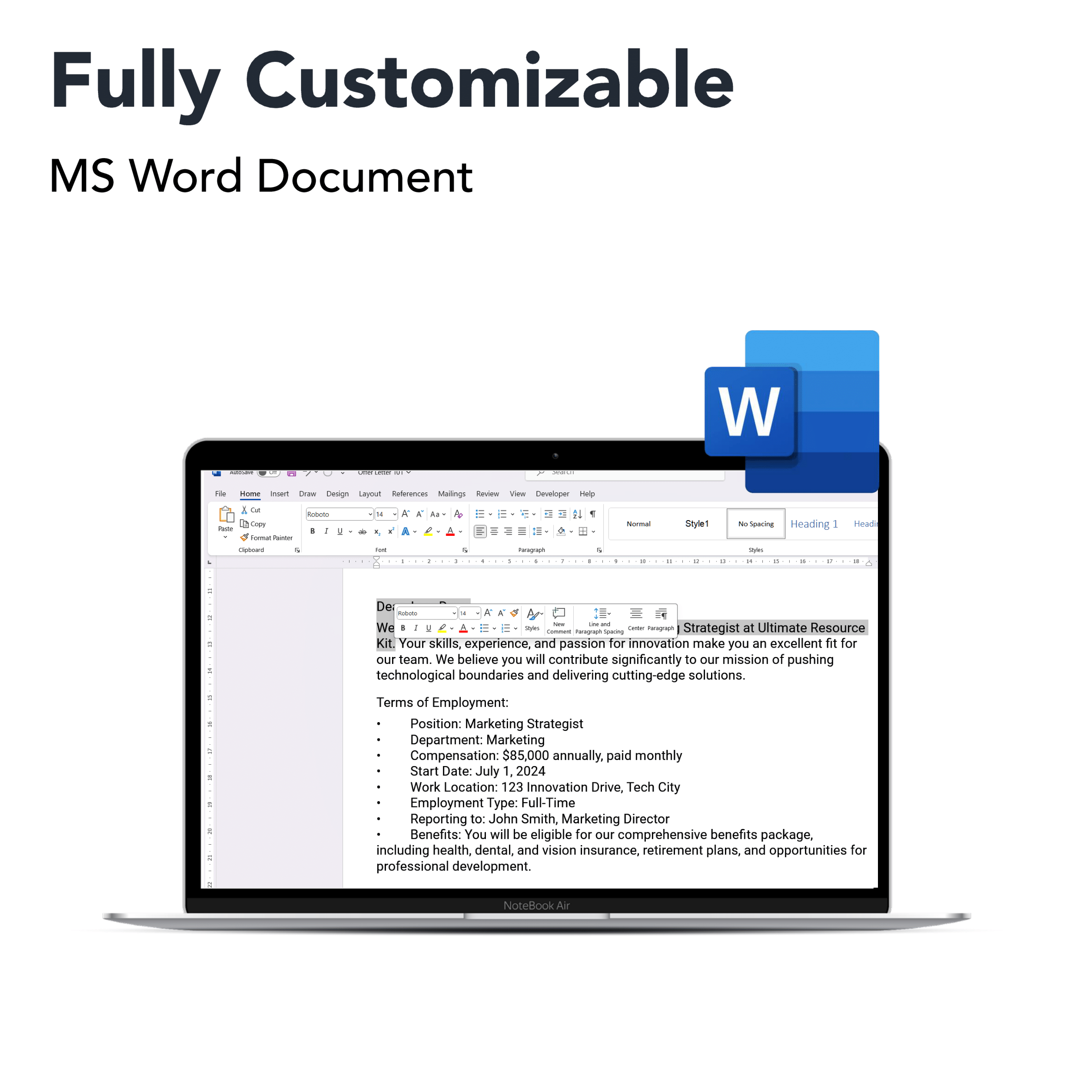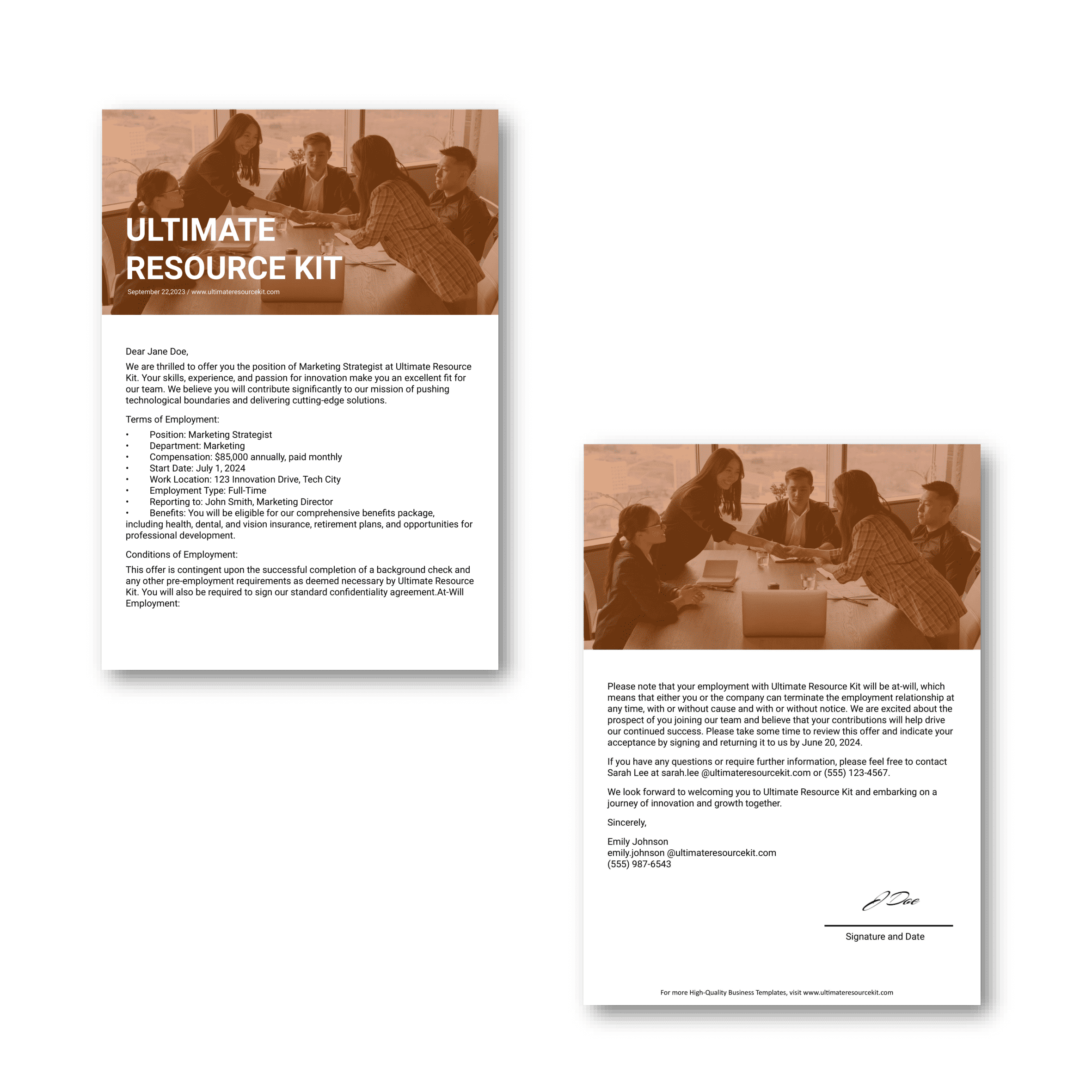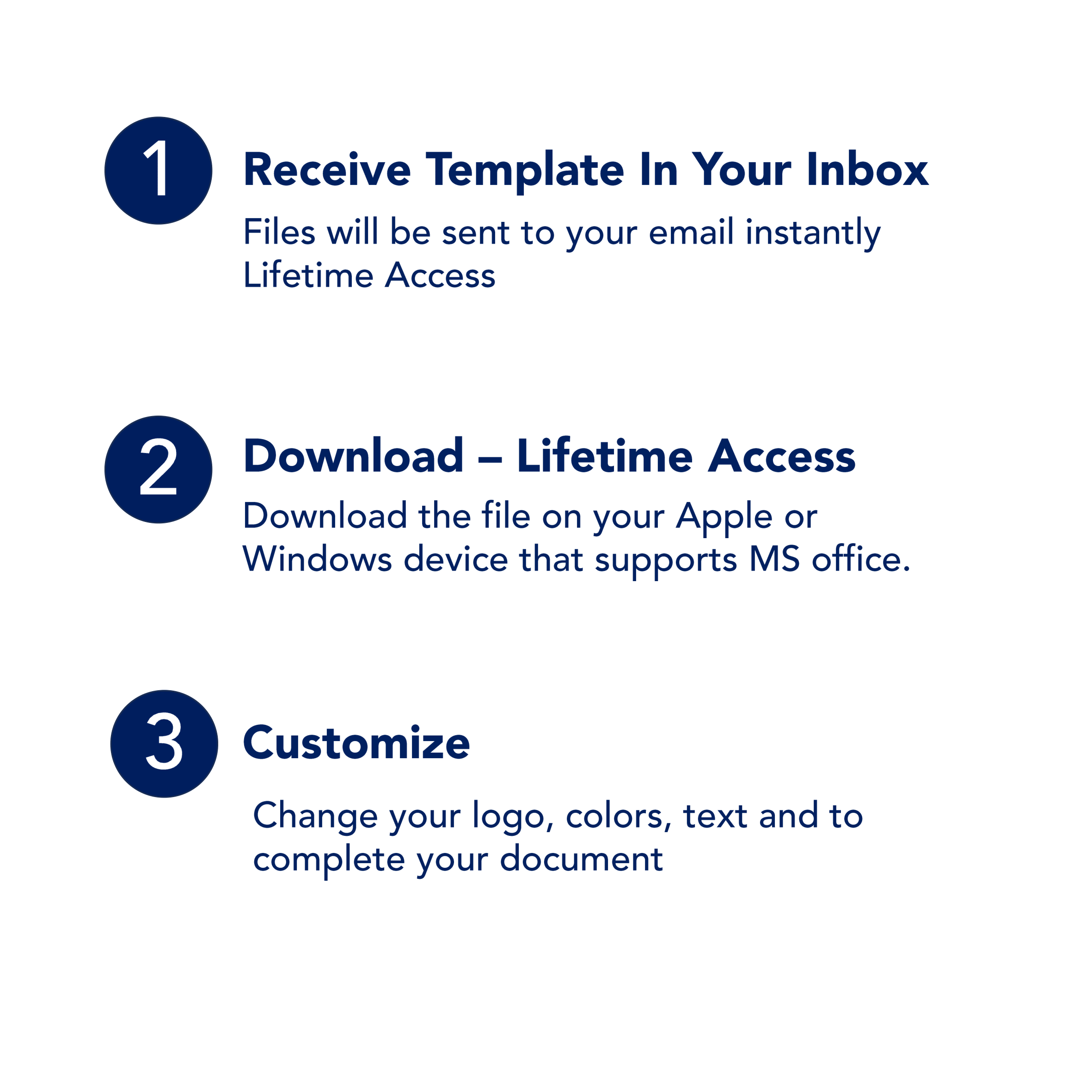











An offer letter is a comprehensive and formal document provided by an employer to a prospective employee, offering them a job position within the organization. This document is a critical part of the hiring process, as it serves multiple purposes, including confirming the terms and conditions of employment, outlining the job role, establishing the compensation package, and formalizing the employment relationship.
Here are the key components typically found in an offer letter:
Contact Information: An offer letter typically starts with the contact details of both the employer and the candidate. This includes the company's name, address, and contact information, as well as the candidate's name and address.
Job Title and Department: The letter specifies the job title of the position being offered and the department or team within the organization to which the candidate will belong.
Start Date: An important piece of information in the offer letter is the candidate's anticipated start date. This date marks the beginning of their employment with the company.
Employment Status: The offer letter specifies whether the position is full-time, part-time, temporary, or permanent, along with details about the work schedule.
Compensation: One of the most critical sections of an offer letter is the compensation package. This includes details such as the base salary, hourly wage, or annual salary, as well as information about pay frequency (e.g., biweekly, or monthly). Additionally, the letter may mention any bonuses, incentives, or commissions that are part of the compensation package.
Benefits: Employers often outline the benefits package in the offer letter. This can encompass health insurance, dental and vision coverage, retirement plans, stock options, and other perks or benefits provided by the company.
Reporting Structure: The letter typically mentions the candidate's supervisor or manager and provides an overview of their position within the organizational hierarchy.
Job Responsibilities: The offer letter briefly outlines the primary responsibilities and duties associated with the job position. While it may not provide a comprehensive job description, it offers a general overview of what is expected of the candidate.
At-Will Employment: Offer letters often include a statement confirming that the employment relationship is at-will, meaning that either the employer or the employee can terminate the employment relationship at any time, with or without cause or notice.
Conditions of Employment: Some offer letters include conditions that must be met before the candidate can start, such as background checks, drug tests, or verification of credentials.
Acceptance Deadline: To ensure timely communication, the offer letter typically specifies a deadline by which the candidate must accept or decline the job offer.
Signature Lines: The offer letter typically includes spaces for both the employer and the candidate to sign and date, indicating their agreement to the terms outlined in the letter.
In summary, an offer letter is a comprehensive document that covers various aspects of a job offer, including job details, compensation, benefits, and employment conditions. It serves as a formal agreement between the employer and the candidate, setting the stage for the candidate's employment within the organization.